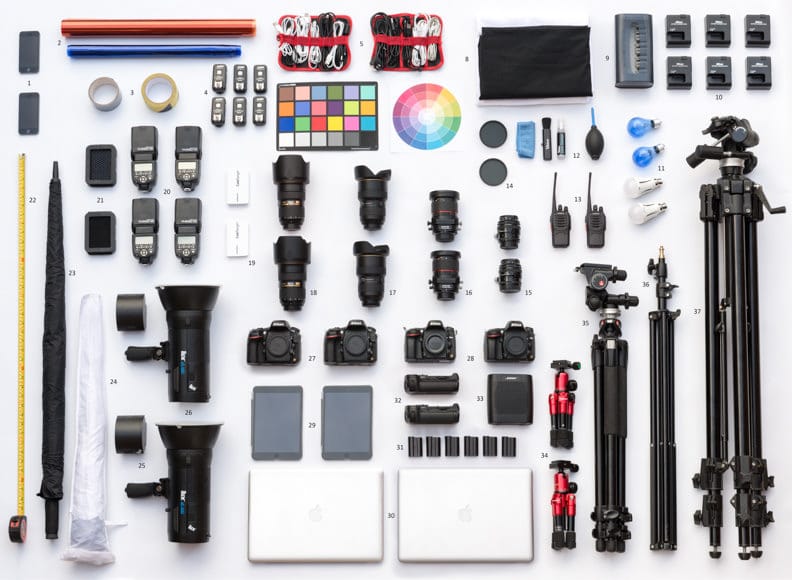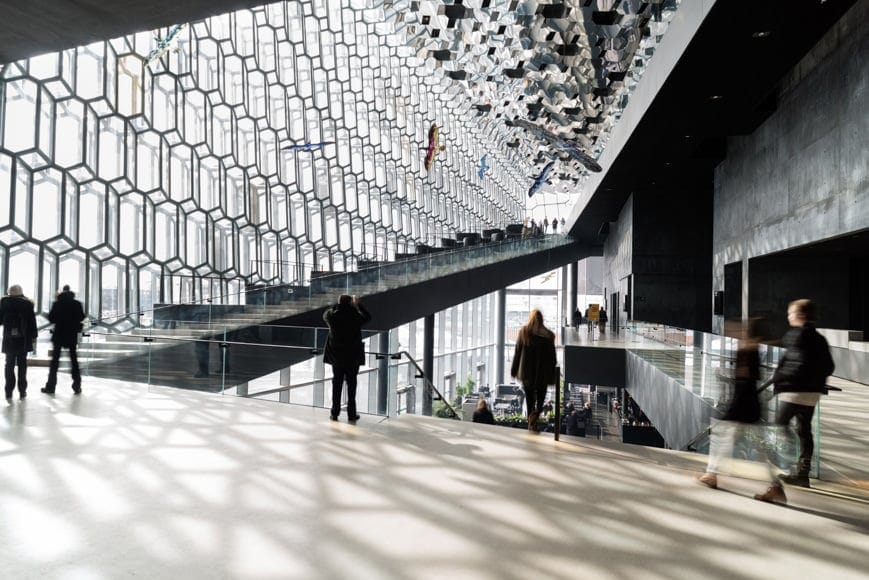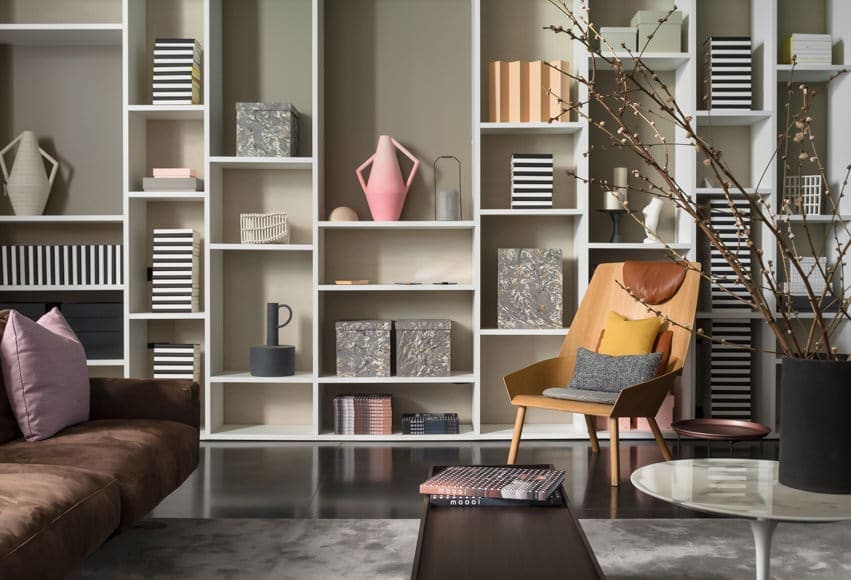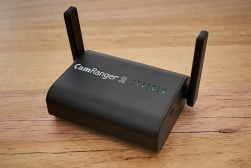








ZAC and ZAC
Architecture | Last Updated: April 4, 2024
Hello, we are ZAC and ZAC. Two cousins from Scotland who get our kicks from shooting well designed interior spaces and architecture. We each have a background in product design which first got us interested in photography as we began to photograph our own designs. With our family working in the interior design business we soon realised our passion also lay there, putting two and two together we became interior and architectural photographers.
Most of our time on location is spent preparing for the shot. Following the sun around a building, organising and positioning furniture, tidying curtains, cushions and fabrics, adding accessories… There is a lot to consider before pressing the trigger. Using CamRanger allows us to have more control and flexibility by being able to shoot standing away from the camera and giving us a more useful preview of each shot compared to the camera screen. It also helps us to discuss shot details in real-time with our clients.
Over the past 3 years we have developed what we call ‘tricks’ to manipulate troublesome aspects of interiors that compromise the quality of the final image. These ‘tricks’ are used to fix things like blown out lights, unwanted reflections, colour casts, lift dark shadows and better control natural daylight. Our aim is to fix the inconsistencies found in a single exposure. We do this by using multiple exposures and selectively masking through different layers in Photoshop to create a final image that best replicates how the dynamic range of our human eye perceives a space.
Below is an itemised list and brief description of the equipment we use on most photography shoots. We each have our own set of photographic gear which is why there are two sets of almost everything…
1. iPhone 5S: This has multiple purposes and is an important little tool. First and foremost during the shoot it helps us stay connected to the client when they are off-site. We also use it to take notes on improvements or anything job related that we don’t want to forget. The phone lets us track the sun’s location via the Sun Seeker app, and it becomes a handy back-up controller for taking shots with the CamRanger
app. Plus we use iTunes to Bluetooth music to our Bose speaker for a more pleasant shooting atmosphere.
2. Rosco Cinegel Warming and cooling gels: To help control light temperature these gels are used with speed flashes and hot lights to set the right atmosphere. The warm gels are especially useful for more moody twilight shots and make it easy to match or magnify the colour temperatures already found on location.
3. 3M Duct Tape and Chevron Hazard Tape: We use this stuff more and more. It’s great for marking a safe zone around the tripod so that passersby are less likely to trip over it and the camera is more likely to remain still and uninterrupted from movements in the floor. Tape is also handy to tie up unwanted cables to speed up post editing, and attaching grey cards to surfaces to help achieve the correct white balance. Also just great for taping up odds and ends in general.
4. Calumet Pro Series 4 Triggers and receivers: These are vital to let us have free movement of flashlights away from the camera.
5. BUBM cable organiser pouches: Without this cables are a logistical nightmare. They tangle quickly and that specific one you are looking for becomes hard to find. The pouch prevents all this allowing us to keep our cables neat and tidy always.
6. X-Rite Colour Checker Classic Chart: Interior designers spend a lot of time getting their colour schemes just right. The colour checker insures the most accurate representation of colour within the final image and shows to the client that you are aware of the importance of this.
7. Homemade colour wheel card: This is a styling tool to colour match objects and accessories. It suggests good opposing or related colours to what you already have in the scene.
8. White and black sheets from local fabric store: Incredibly handy! These have multiple purposes for blocking and reflecting light on objects and in and around the scene as a whole. They are great fixing tools and very inexpensive.
9. Duracell Universal Multi-Battery Charger for AA & AAA batteries: Chargers are crucial as all our electrical items rely on them. This one is good as it holds 12 batteries and cuts the power after a full charge, improving their longevity.
10. Nikon MH-25 Chargers for Nikon EN-EL15
camera batteries.
11. Crompton Daylight Lightbulbs and Lucemi LED Globe Lamps 3000K: These are used now and again to correct mismatched lamps on location. Sometimes we will find mixed lamp colour in a space or mixed intensities of lamp light. Using our own lamps with the same colour and wattage keeps everything balanced and more aesthetically pleasing.
12. Baofeng 2 way long range Walkie-Talkie: When on location these are good for Ryan and I, or our assistants, to talk to one another when phone reception is poor or non-existent. Most commonly used when there is one person inside shooting and the other is outside manipulating the light coming into the shot.
13. Viking Professional Lens Cleaning Kit: Handy to have on you at all times. Your shots are only as clean as your glass.
14. Hoya Pro 1 Circular Polarising Lenses: When the camera is at that angle when the reflective surfaces are at their worst, the polarizing lens is used to calm things down a bit.
15. Nikon 35mm f/2.8 PC Lens: Great for low distortion and in-lens perspective correction. This is an old little gem from the 1980s and it feels great to hold; the build quality is superb! It requires a bit of manual configuration with focus, aperture and perspective shift as it is not electronically connected to the camera body. Optically it is good too with low lens flare and achieves sharp image quality. Nikon doesn’t make these anymore but they can still be picked up second hand at really affordable prices.
16. Samyang 24mm f/3.5 Tilt-Shift Lens: Tilt shift lens for most occasions. We compared this to Nikons equivalent 24mm PC lens and couldn’t see any substantial differences that made it worthy of paying three times the price for it. Overall the image quality is great, sharpness is good. Without a lens hood, flare can become an issue and the shift knobs and overall build quality could be improved. Overall it ranks well and has captured some of our best work.
17. Nikon AF-S 16-35mm f/4 Lens: We try to avoid using lenses this wide as they can give a false representation of the size of a space. However, they are still a very useful especially when capturing full overview shots and necessary in tight situations where you just can’t get enough room to use a greater focal length. It’s a comfort to know the 16-35mm is there when we need it.
18. Nikon 24-70mm f/2.8 Lens: Good all round versatile lens. This lens really does have great optical characteristics. The sharpness is bang on and the flare is minimal with the help of a good lens hood. We use this lens primarily for spec shots and product shoots on location.
19. CamRanger: Our final shots are made up by overlaying multiple exposures manually (not to be confused with HDRI) to help fix all the faults found in a single exposure. This means having a completely stationary camera throughout each shoot. The CamRanger
(review) helps us achieve this by letting us remotely control camera settings via an iPad
without ever having to touch the camera once it is set up. It’s a must have tool for us.
20. Yongnuo YN-560 III Speedlights: We use artificial light sparsely in general as we prefer to make the most out of natural light which is hands down the best for quality. In certain situations though speedlight flash can help give a little more kick to colours and textures. For moody twilight shots they are great used with warm gels to add accent lighting to furniture and accessories.
21. Micnova Speedlight Grids 1 x 1/4 and 1 x 1/8
: When we want to limit the spread of light and focus it in a specific area or onto a specific piece of furniture we use these grids to narrow the beam angle. Narrower beam angles help us see exactly what we are lighting on location, have more accurate light control and make light-spill to unwanted areas easier and faster to clean up in post.
22. Task Tools Tr213 25ft Protrak Tape Measure: We are perfectionists and so are our clients. So having objects and furniture the correct distance apart can only be achieved accurately by using a measuring stick.
23. Fulton Stormshield Windproof Umbrella: Big umbrellas are essential for shooting outdoors, especially in sunny Scotland. The last thing we want is to blown away so a top quality windproof golfing umbrella is the best solution in poor weather situations.
24. Photosel UM336T 91cm Shoot-through umbrella: In low level light situations a touch of flash via a well positioned shoot-through umbrella really helps lift the ambient light of an interior. We don’t use this much when we have to shoot that darker room from time to time this umbrella is always on hand to help.
25. iLux Summit 600C Flash-head battery: These guys really hold a lot of power. Charging is around 5hrs but they last from around 2-3 shoots before needing some more juice.
26. iLux Summit 600C (S-Mount) Flash-head: This is a new purchase for us. They are replacing our old cable powered Bowen Gemini 400W heads. The ilux is a cable-free 600W light with built in trigger and easy to hold central drop handle. It is a direct competitor to Profoto’s B1 without the TTL function but with an extra 100W power which comes in handy. They are a lot more affordable than the B1s
and the build quality is very similar. We have only had it for a month now and so far so good, we love it!
27. Nikon D800 camera bodies: This is our core camera and with such high resolution it gives us more cropping possibilities and allows our clients the opportunity to print images BIG! With two memory card slots we can back everything up in the event of a card failure which has saved us before, you can’t have enough backups sometimes. The only real beef we have with this camera is the flimsy USB micro type B port for tethering. It’s fragile, and so easily damaged. We are currently looking into a solution to protect the ports called Lockport by a company called Lockcircle.
28. Nikon D610 camera bodies: Solid full frame backup camera. This camera has saved jobs after faults in the Nikon D800
, so we simply can’t shoot without it.
29. iPad Mini 2 : Used as the Camranger remote controller it’s great for setting up composition, showing clients preview images and double setting up focus. Its size makes it manageable to carry around but at the same time large enough to analyse the shot properly.
30. Apple Macbook Pro
2013 15″ 2.2GHZ Intel Core i7, 16GB RAM DDR3, 500GB SSD: We don’t use this for every shoot but it can be helpful to review shots more thoroughly, conduct quick test edits, create another set of image backups.
31. Pixel MB-D12 Battery Grip for Nikon D800: For large spaces that take a long time to shoot the battery grip means we don’t need to worry about batteries going flat. Due to its clunkiness we only use it when necessary.
32. Nikon EN-EL15 Camera Batteries: We keep enough to make sure we’ll never go short.
33. Bose Soundlink Colour Bluetooth Speaker: As mentioned in previously this is used to lighten the mood as we shoot via music sent by bluetooth from our iPhones
.
34. CamboFoto M225 & CK30 Mini Ultra Compact Tripods: These little guys are saviours in really tight and awkward spaces, or if you just want to get down really low. We use them mostly on table tops and kitchen worktops where they allow us to go further back and tighten the focal length.
35. Manfrotto 055XPROB Tripod with Manfrotto 410 Junior geared head
: This is our core tripod. It’s durable and stable. It is also quite heavy for its size as it is fully metal, but this only adds to its stability which is essential. The geared head is good for the initial adjustments but does have some small movements due to slack. Because of this, the Arca Swiss C1 Cube
is soon to replace it.
36. Bowens BW6605 Handy Stand: We have several of these. They act as extra pairs of hands by holding speedlights and flash-heads so we don’t have to.
37. Large Manfrotto 161MK2 Tripod: This is a mighty large tripod. When height is essential we use this to help us reach it. Its size and weight is logistically awkward to transport between the studio and shoot locations but the results speak for themselves. It is a solid and simple piece of mechanical engineering that we highly recommend.

Check out these 8 essential tools to help you succeed as a professional photographer.
Includes limited-time discounts.












